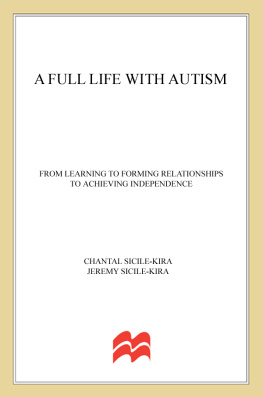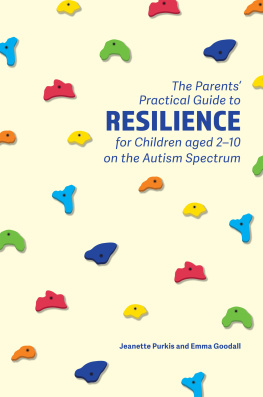For me, the author of Soldiers in Different Armies has captured, with effective language something of the vital life of two different Australian armies at a critical time in our countrys life.
Lt Colonel Wesley J. Kinder, Salvation Army Officer
This is not your usual war story. In a well written narrative Brenda has portrayed the unusual role of her soldier father in the famed 2/14 th Battalion A I F and her Salvation Army Officer mother.
Young William Inglis is born into a poverty stricken Glasgow family in 1906. His disability is of great concern to his mother who fears he will never walk. Ivy is born into a large hardworking farming family in Forbes Australia in 1915. Brenda cleverly entwines the stories of their lives through childhood, emigration, depression, war and victory while painting pictures that will stir memories in many readers. The images skilfully sculptured by Brenda guide the reader through the effort of survival on a rural farm in early 20 th Century Australia; through days of depression that will cripple strong men; through days of training in the Salvation Army Eastern Territory College: through the Middle East and Kokoda with the 2/14 th Battalion; through rural Australia suffering the deprivation of war and finally the cessation of war, but not an enduring personal peace. Survival extracted a toll Ivy and Jock would continue to pay for many years.
This is a story of sacrifice, commitment, friendship, dedication and affection that is well written and easy to read while telling a unique interesting story.
Ross Wilkinson
Historian, 2/14 th Battalion Association.
Soldiers in Different Armies will appeal to many different readers. Firstly, the writer presents an interesting snapshot of life in early Australia and to a certain extent, Scotland, during the depression and the pre-World War II years. As the story unravels, she sensitively reveals and follows a growing love story between the emigrant Scotsman Jock Inglis and an Australian Salvation Army Officer, Ivy Trethewey. When war breaks out, Jock becomes a member of the famed AIF 2/14 th Battalion and serves with a Salvation Army Officer in the Middle East and New Guinea. Most importantly, the story examines the rigorous and loyal friendship Jock forms while serving as Batman to Salvation Army Officer Major Albert Moore, one of the enduring characters forever connected with the Kokoda Track. This aspect, then is the highlight of the book as the two men support each other as they provide physical, emotional and spiritual succour to soldiers pushed to their absolute extremes during the exhaustive, vicious and bloody Kokoda Campaign. In doing this, the story pays tribute to the often unheralded and courageous role of unarmed Chaplains during war.
The story then follows the respect and friendship that these men had generated for each other which endured a lifetime after the war. Just as importantly, the writer examines the serious legacies and price that the war extracts from Jock and Ivy.
Peter Dornan, Author The Silent Men
Thank you so much for the opportunity to review Soldiers in Different Armies . I count it a real privilege and very much enjoyed reading it. Brenda has a very easy-to-read style that really captures the interest. I even shed a few tears in some places. Brenda has captured a real sense of what the Army was like, back then as well as portraying a very special woman.
Major Marina Randall Salvation Army Officer
Soldiers in Different Armies

BRENDA INGLIS-POWELL
Copyright 2012, 2014 by Brenda Inglis-Powell.
Reprinted 2017
Library of Congress Control Number: | 2012922468 |
ISBN: | Hardcover | 978-1-4797-5466-3 |
Softcover | 978-1-4797-5465-6 |
eBook | 978-1-4797-5467-0 |
All rights reserved. No part of this book may be reproduced or transmitted in any form or by any means, electronic or mechanical, including photocopying, recording, or by any information storage and retrieval system, without permission in writing from the copyright owner.
Rev. date: 10/05/2016
Xlibris
1-800-455-039
www.Xlibris.com.au
513682
Contents
With grateful thanks to my brother Ron whose collaboration
and encouragement made this book possible
In loving memory of our
Father, William (Jock), and Mother, Ivy
Thank you for purchasing this book.
In doing so, you have assisted The Salvation Armys
work with the Australian Defence Forces
If you would like to know more of their work, please visit
salvos.org.au/rsds/
Chapte r One
BEGINNINGS
G lasgow, Scotland, 1908. Proud, rotund, and strong, Mary Inglis surveyed the room, home to her family of four children, David, Jean, John, little William, and if her suspicions were correct, the fifth was on its way. The family were fortunate; theirs was the front room with a window overlooking the small cobbled Regent Moray Street. Mary made a particular effort to keep the glass clean and dreamed of having curtains at the window one day. Twice a week, she climbed the hill to the servants quarters of the big house to do the washing for a wealthy family. Thanks to a kind-hearted servant, her children always wore clean clothes that Mary carried up dirty and carried back wet but clean, ready to hang up to dry. Her scarred, red-lined caustic hands bore testimony to this twice-weekly excursion.
The room in which Marys family lived was furnished with a table, two chairs, and one iron bed under which three bedrolls were stored. A wooden box in the corner served as a baby cradle. A wooden kitchen dresser with one of the two wire mesh doors broken off from its hinges completed the furnishings. The cook at the big house had told Mary that there was a broken chair in the basement and that if Mary wanted it, she could ask the gardener to mend it for her. She knew that Marys husband was not able to do such things. If it could be fixed, then maybe two of the children could share it during mealtimes.
A cast-iron pot and a water fountain sat on the large black stove. Strung above the stove was a rope line where Mary dried her childrens clothes. Several pegs on the wall held a large pot, a pan, and three large cooking spoons. Another wooden box on the floor near the door held the familys shoes when they were home. They were certainly too dirty and, in the winter, too wet to wear inside the room. Her children always had shoes on their feet unlike the street urchins, as Mary called them.
Porridge was the staple diet, eaten either hot or cold. A large pot of water containing scraps of bone became the evening meal. It was the childrens responsibility to walk the railway line and collect coal fallen from the trains to provide fuel for the fire. Out by the back-lane fence, the privy was used by the twenty-three adults and children who lived in the tenement. It regularly overflowed and poured out into the backyard, often seeping down the centre hallway. Large rats frequented the outdoor privy; only two weeks ago, a baby had died in its cradle after being bitten by one of these ultimate survivors.
The centre hallway, shared by three other families, was hard clay which turned to mud when cold rain swept down the hall. The broken door no longer helped keep the wind and rain at bay.
Mary cleaned and scrubbed her room while dreaming of something better for her family. Some weeks her baker husband would bring home a miniscule wage that she was expected to stretch, but other weeks the money did not arrive at all. Instead, William would sway in a drunken stupor down the street, having drowned his sense of failure in alcohol. Glasgow was a poor city, and William wanted more for his children, but more never came.
Next page











